Sports
The strangely specific transfer obsessions of elite clubs, and what the summer window taught us about them
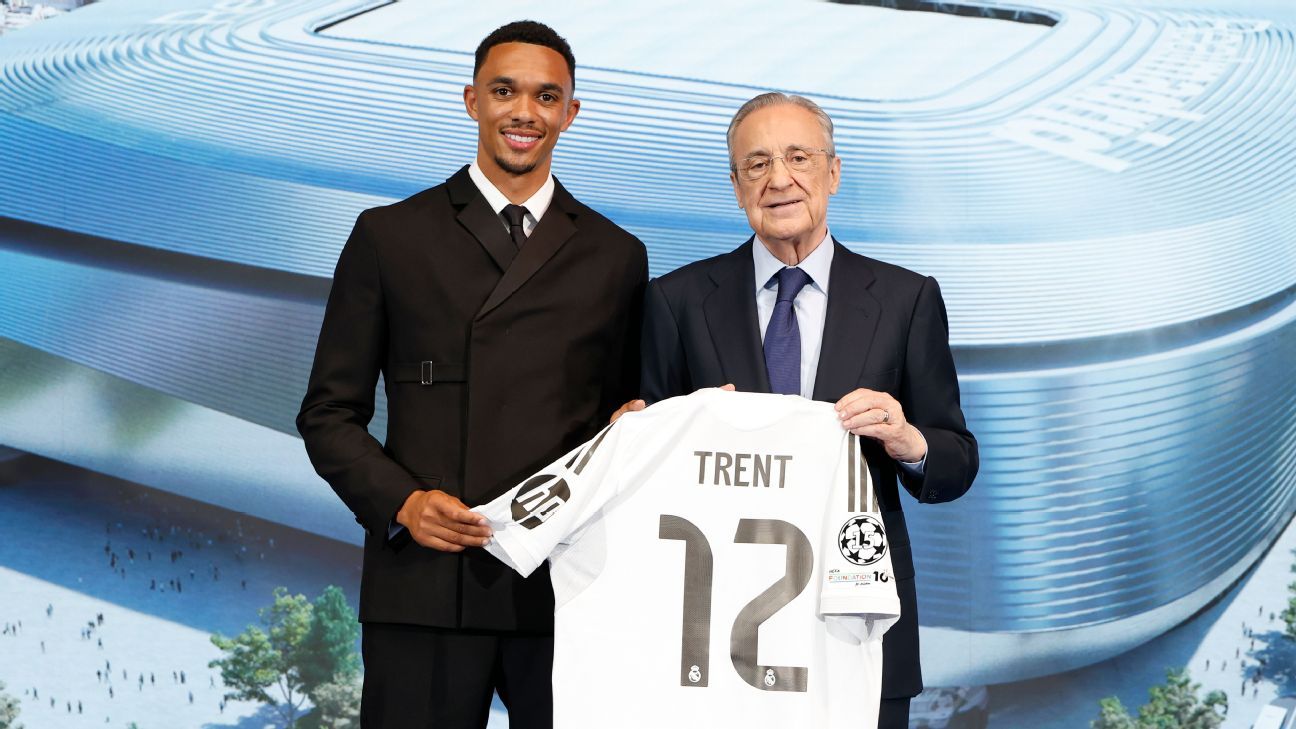
Everyone has a “type.” This concept of preference extends far and wide, to all walks of life, and can ring especially true in soccer, where managers and clubs cannot hide what they truly desire.
Sometimes, the wish is simple: the best players in the world, whatever the cost. But at times it’s weirdly specific, such as Real Madrid targeting free transfers, or Arsenal manager Mikel Arteta’s taste in defenders.
This transfer window once again laid bare the infatuations — and at times, borderline obsessions — that have developed within the sport. So, with tongue firmly lodged in cheek, let’s take a look at what this summer’s moves revealed about elite clubs’ obsessions.
Mikel Arteta and the hybrid center back/fullback
In Bukayo Saka, Martin Ødegaard & Co., Arteta has some of the world’s most luxurious attacking talents to work with. He also has a brand new striker in Viktor Gyökeres to unleash and an incredible midfield pool to call upon. But you know what really excites him? Players who can play both center back and fullback.
– Tighe: How players use data to show worth in contract negotiations
– O’Hanlon: Top 50 most expensive summer transfers, ranked by true cost
– Marcotti: Making sense of Premier League clubs’ record spending
The Spaniard has stuffed his squad full of them over the years. It started with Ben White and continued with Jakub Kiwior, Jurriën Timber and Riccardo Calafiori. Then late in this summer’s window, Arsenal added Piero Hincapié from Bayer Leverkusen.
Arteta probably awards bonus points to a deal if the player can cover both fullback positions (like Timber), or if they’re left-footed (like Calafiori and Hincapié) as this makes them even more versatile or coveted. Even Arteta’s more “regular” fullbacks barely look traditional: Oleksandr Zinchenko and Myles Lewis-Skelly love to invert into midfield and arguably look more at home in central positions.
Chelsea and signing teenagers whenever they can
In 2022, their first summer transfer window in charge of Chelsea, Todd Boehly and Clearlake Capital splurged on a series of experienced talents. Pierre-Emerick Aubameyang (33), Kalidou Koulibaly (31) and Raheem Sterling (27) were the most notable names in a group that, quite frankly, failed.
Was it a scarring experience, or was the impending pivot simply always in the cards? Perhaps it was a bit of both, as the ownership group suddenly focused on signing exciting prospects, many of whom were still teenagers, to long-term deals.
From January 2023 to now, they have signed an astonishing 22 teenagers — a figure that includes the pending transfers of Geovany Quenda and Denner, due in 2026. On top of that, a lot of 20- and 21-year-olds have arrived, flooding the squad with high-potential players.
1:09
Is Chelsea a good fit for Garnacho?
Gab Marcotti and Julien Laurens discuss Alejandro Garnacho’s move from Man United to Chelsea.
There have been times when Chelsea have overindexed so heavily on prospects and ignored gaping holes in their squad makeup that, if plugged, could have allowed them to compete more closely with Liverpool and Arsenal in the past couple of seasons. The prime example of that is at goalkeeper, which has long been brushed aside.
An interesting quirk of the Blues’ relentless acquisition of top prospects is how many players they signed from Man City’s academy. There could easily be a game this season where you’d see five players developed by City — Roméo Lavia, Cole Palmer, Tosin Adarabioyo, Jamie Gittens, Liam Delap — play for Chelsea’s first team. That quintet cost a combined total of at least £171 million. Perhaps that’s the real obsession here.
Manchester United and buying specific players for specific managers
Manchester United operate in total contrast to Chelsea in the transfer market.
Chelsea’s scattershot approach yields so many players that any manager they employ would find it impossible not to craft a workable team out of the talent available. United sign incredibly specific players who suit their chosen manager. There’s nothing wrong with that in principle — why wouldn’t you sign players your manager can use effectively? — but the extent to which the Red Devils lean into this can be very damaging if things go awry, in part because they flit between managers whose styles differ so wildly.
A strong example of this disconnect is Cristiano Ronaldo, who was signed for Ole Gunnar Solskjaer’s counterattacking style in summer 2022, yet by November was being coached by gegenpressing magnate Ralf Rangnick. It’s a ridiculous situation to find yourself in.
Erik ten Hag was appointed in 2022 and by the time he was sacked, in 2024, the club had furnished him with six former Ajax players (Lisandro Martínez, Antony, Christian Eriksen, André Onana, Matthijs de Ligt, Noussair Mazraoui), perhaps erroneously thinking he would recreate Dutch total football at Old Trafford.
Current manager Rúben Amorim has jettisoned Antony and Onana, while Eriksen has departed. He also willingly waved goodbye to Jadon Sancho, Marcus Rashford and Alejandro Garnacho this summer, effectively uprooting the winger department to sign Matheus Cunha and Bryan Mbeumo, who suit the “wide No. 10” roles in his 3-4-2-1 system.
What happens if Amorim departs the club and the next manager asks where all the wingers are? It sounds too silly a situation to happen, except it essentially has already in other guises.
Real Madrid and illustrious free transfers
After winning the UEFA Champions League an incredible 15th time in 2023-24, it appears Real Madrid began to think things had gotten too easy and decided to up the difficulty level.
They’ve seemingly chosen to spend as little on transfer fees as possible while still remaining a dominant force. In the past five years, they’ve signed four elite-level players on pre-contracts, coming close to adding a fifth. Antonio Rüdiger (Chelsea), David Alaba (Bayern Munich), Kylian Mbappé (Paris Saint-Germain) and Trent Alexander-Arnold (Liverpool) were all poached for free from close rivals at the top table of Europe. (OK, they did end up paying a fee for Alexander-Arnold, but only to register him early so he could feature at this summer’s FIFA Club World Cup.)
For much of the 2024-25 season, it looked as though they’d add Alphonso Davies from Bayern in this fashion too, but in the end, the Canadian international renewed with the German giants.
Los Blancos‘ prestige and pull means they are genuinely capable of convincing elite players to see out their contracts and patiently wait for a move to the Bernabéu. For a club long famous for its galácticos philosophy, it’s an intriguing and surprisingly responsible wrinkle.
Barcelona and signing players when they probably shouldn’t
The following two statements are unequivocally true:
1. Barcelona are over €1 billion in debt
2. Barcelona have one of — if not the — best and most prolific academies in the world
You would think that a combination of these points would result in an almost complete reduction in spending and a complete reliance on La Masia, which in the last five years alone has pumped out Alejandro Baldé, Pau Cubarsí, Nico González, Gavi, Fermín López and, of course, Lamine Yamal — and that’s not even the full list. But it hasn’t. Barça are a competitive animal, so rather than experience a withdrawn couple of seasons, they’ve pulled every possible lever (literally) to allow continuous spending, which has seen the Blaugrana sell off major future revenue streams and wage a constant war against LaLiga’s spending limits.
This summer’s signing of Joan García captured this internal strife. The opportunity to sign an incredible goalkeeper directly from crosstown rivals Espanyol was just too good to pass up, but in order to register him, they forced club captain Marc-André ter Stegen to sign an injury report that would allow them to take advantage of a long-term injury rule in LaLiga.
Last summer, they signed Dani Olmo for €55 million off the back of an impressive Euro 2024 campaign, despite not really needing a player in his position and the fact that they would struggle to register him — so much so that they had to go to court to keep him registered for the second half of the season.
To millions of onlookers, the solution at Barcelona seems relatively simple: Stop spending big, rely on the current crop and burgeoning academy, and let the reopening of the Camp Nou fill the coffers to repay those debts. But that’s just not how president Joan Laporta rolls.
Sports
Vanderbilt coach addresses Diego Pavia’s Heisman controversy: ‘Sent the wrong message’
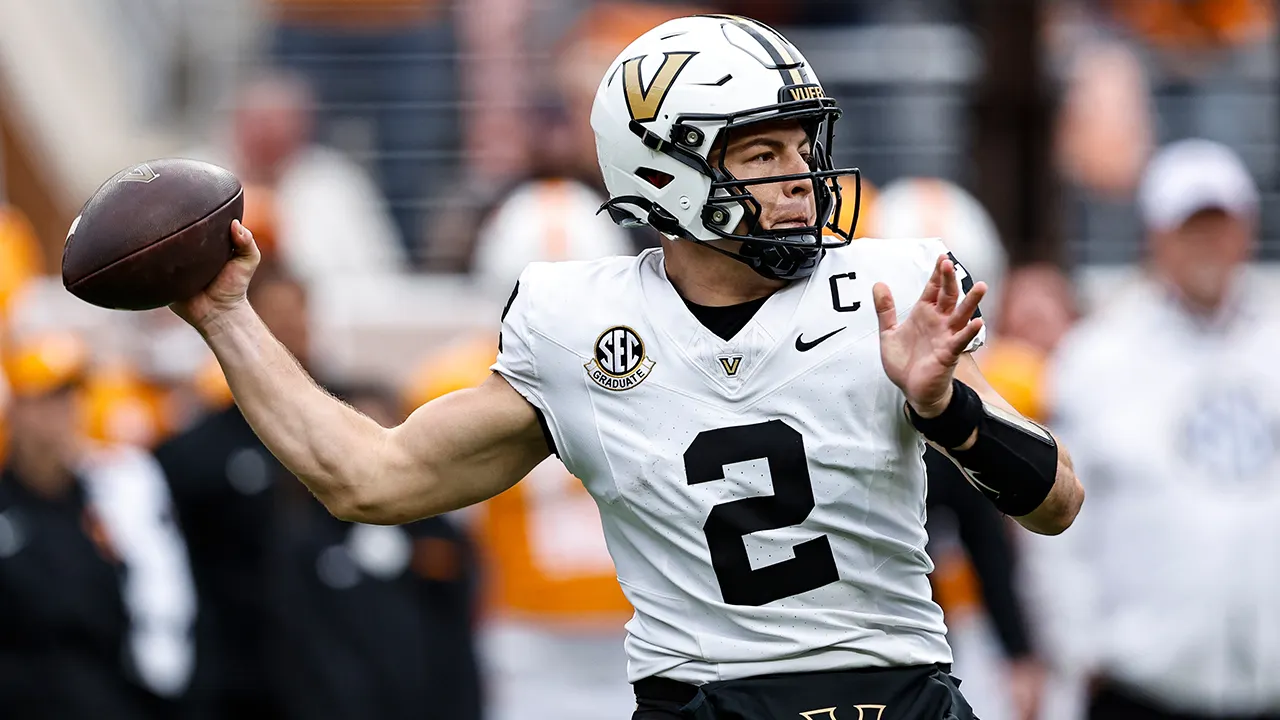
NEWYou can now listen to Fox News articles!
Vanderbilt football coach Clark Lea defended quarterback Diego Pavia after his controversial behavior following the Heisman Trophy ceremony, but noted that Pavia’s actions “sent the wrong message.”
Pavia, 23, finished second behind Indiana’s Fernando Mendoza, who led the Hoosiers to a perfect 13-0 record and a Big Ten Championship prior to the College Football Playoff (CFP). The result prompted a less-than-gracious response from Pavia, who posted on social media, “F-ALL THE VOTERS, BUT…..FAMILY FOR LIFE.”
Vanderbilt quarterback Diego Pavia (2) throws to a receiver during warmups before an NCAA college football game against Tennessee, Saturday, Nov. 29, 2025, in Knoxville, Tennessee. (AP Photo/Wade Payne, File)
He was also later pictured at a nightclub with a sign that read, “F— Indiana.
CLICK HERE FOR MORE SPORTS COVERAGE ON FOXNEWS.COM
Pavia later apologized in a lengthy post on social media, but not before being met with widespread backlash.
Speaking to the media on Thursday, Lea addressed the situation and attempted to explain Pavia’s thought process.
“I regretted the fact that he put that out there, and I appreciated his apology. This is such an example of the way – I mean, this kid has had an unbelievable career. It’s an amazing story, and he got up until the point where he was reaching a childhood dream, and he fell just short and there’s so much goodness in that.

Heisman Trophy candidate quarterback Diego Pavia of the Vanderbilt Commodores poses with the Heisman Memorial Trophy before the 2025 Heisman Trophy Presentation at Marriott Marquis Hotel on Dec. 13, 2025, in New York City. (Adam Hunger/Getty Images)
HEISMAN TROPHY VOTER BLASTS VANDERBILT’S DIEGO PAVIA FOR F-BOMB REMARK IN FIERY COLUMN: ‘PUNK MOVE’
“But the idea that he’s been battling against doubters and feels like he’s constantly having to prove himself, that’s not new to him. But what is always true to Diego is the people in his corner, those that he’s closest with, they have his heart. That’s our program,” Lea continued.
“In a moment where I think he was trying to communicate that, he used words that sent the wrong message, that don’t align with our program, that don’t align with who he is. And we make mistakes.”
Lea’s remarks echoed those of Vanderbilt athletic director Candice Lee, who said Monday, “We believe in growth and accountability, and we will continue to support Diego as he learns from this moment.”
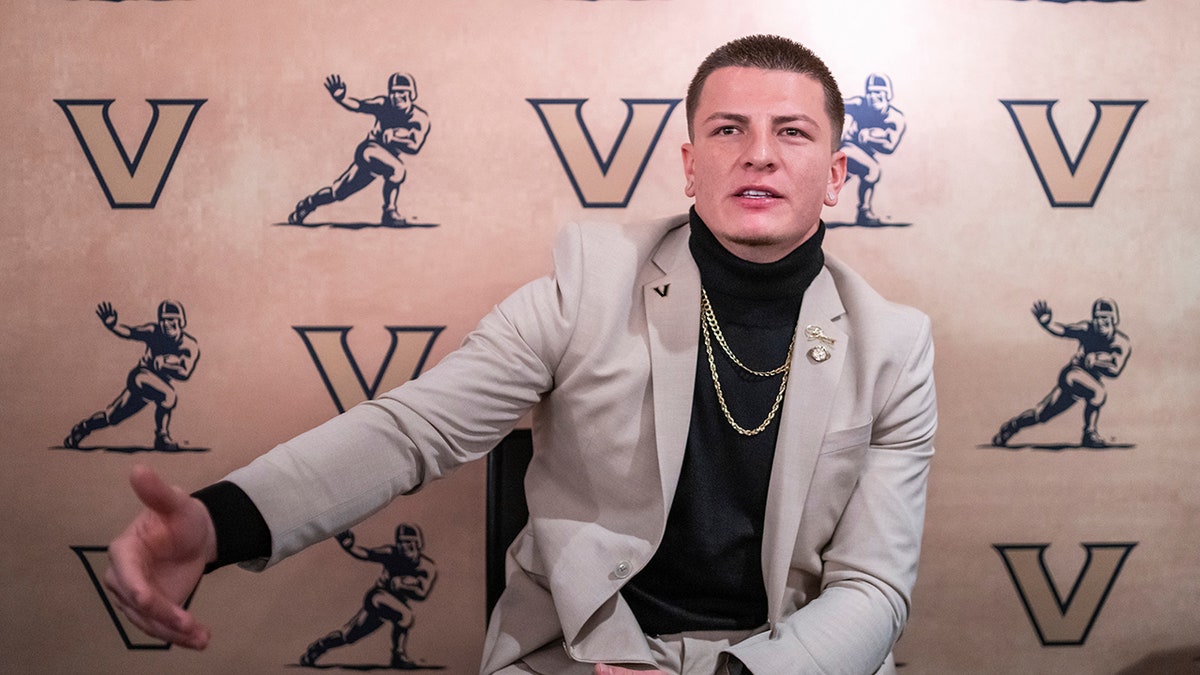
Heisman Trophy finalist Vanderbilt quarterback Diego Pavia speaks during an NCAA college football news conference before the award ceremony, Saturday, Dec. 13, 2025, in New York. (AP Photo/Eduardo Munoz Alvarez)
CLICK HERE TO DOWNLOAD THE FOX NEWS APP
Pavia will wrap up his collegiate career at the ReliaQuest Bowl where Vanderbilt will face Iowa on Dec. 31.
The Associated Press contributed to this report.
Follow Fox News Digital’s sports coverage on X, and subscribe to the Fox News Sports Huddle newsletter.
Sports
The unlikeliest journey to NCAA volleyball’s final four
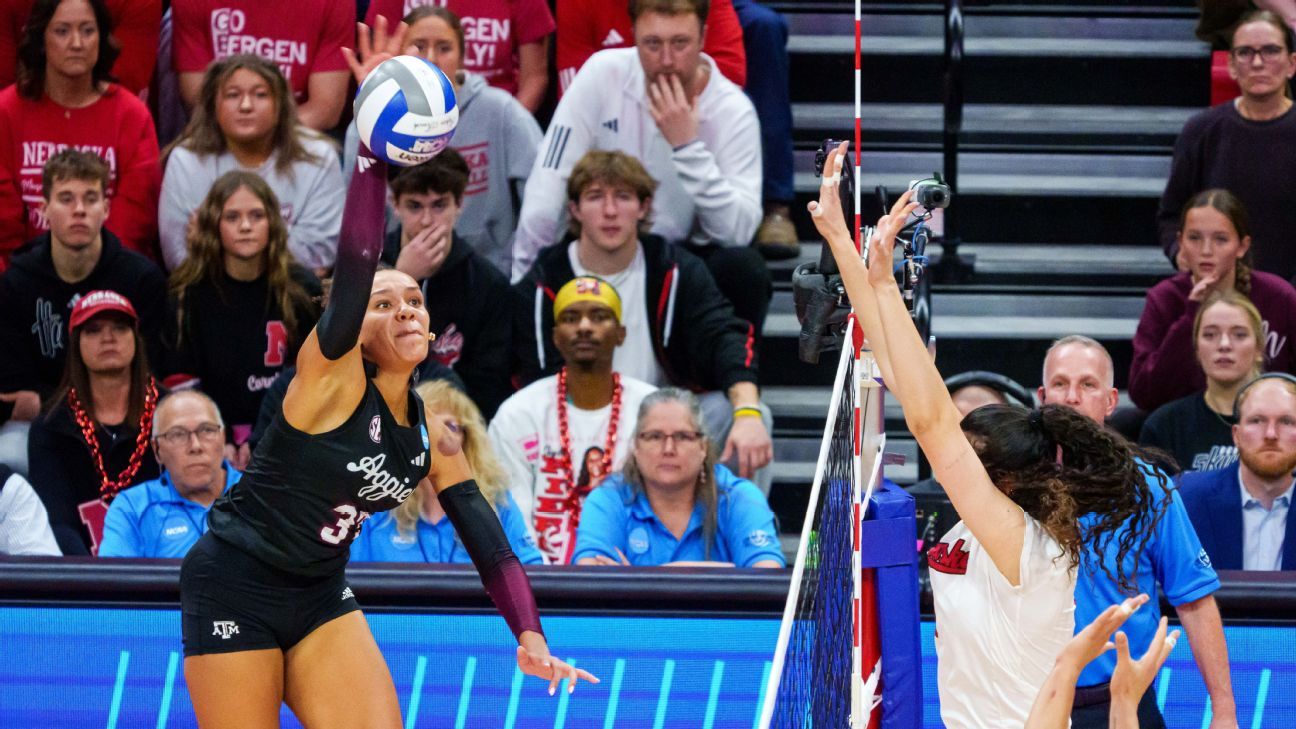
THE DAY KYNDAL STOWERS was told she couldn’t play volleyball anymore, she got in her car, silenced her phone, and drove aimlessly around town.
It was the spring of 2024, and she had endured four concussions over eight months on the volleyball court at Baylor, once in a collision with a teammate and three times from getting hit by the ball. “Why does this keep happening?” she asked herself. She figured she would redshirt her sophomore season and give her brain time to heal.
But near the end of the 2024 spring semester, a team doctor summoned Stowers. She thought it was just another checkup. When she arrived, the doctor, a trainer and a member of the university’s compliance department greeted her. They told her that she was being medically retired, and that her tuition would be paid for but her playing days — at Baylor at least — were finished.
She eventually went home to Denton, Texas, and watched the 2024 Final Four on her parents’ couch.
One year later, on Sunday, Stowers stood on the court at the Bob Devaney Center in Lincoln, Nebraska, celebrating her Texas A&M team’s five-set upset over the No. 1 — and previously undefeated — Cornhuskers in the regional finals. She had 25 kills and then found her mom in the crowd and cried. She rarely does that, Tina Stowers said.
But this is a story about the unlikeliest player on the unlikeliest semifinal team in the NCAA women’s volleyball tournament, and the moment commanded some emotion. It’s about a sports family supporting her decision to keep playing, and taking the steps necessary to ensure she’s as safe as she can be in an unpredictable arena of high-velocity swings, crashing bodies and flying elbows.
On Thursday, she’ll play for Texas A&M against Pittsburgh in the national semifinals.
“I knew that I wasn’t done,” Stowers said. “How can I be done with something I never got to start?”
THE STOWERS FAMILY knows about the violence of sports. Don Stowers, Kyndal’s dad, played football for New Mexico State in the 1990s, and was invited to the NFL combine. He played in NFL Europe for a year, and before that was a priority undrafted free agent for the Cincinnati Bengals before becoming a preseason cut by the Bengals and Denver Broncos. But he said there’s video of him tackling Emmitt Smith in a preseason game.
He has coached high school football in Texas, and his son, Eli, is a tight end for Vanderbilt. Tina Stowers graduated from Baylor, played beach volleyball for more than a decade, and coached high school and junior college volleyball. She said she never had a concussion in 30-plus years of volleyball, but acknowledges that back then, there were no protocols, and assessments were generally concluded with the term “getting your bell rung.”
But concussions in volleyball aren’t as rare as they might seem. A 2023 study found that volleyball had the highest rate of concussions (4.93 per 10,000 athlete exposures) among limited-contact sports, including softball, swimming/diving and baseball, and a rate higher than men’s basketball, which is considered a high-contact sport. The NCAA has a concussion safety protocol that schools must follow that applies to all sports. It includes immediate removal from a game or practice if a concussion is suspected and continued evaluation by a team physician in the hours and days following the injury.
When Kyndal sustained her first concussion at Baylor during the summer of 2023, before her freshman season, she called her mom. She was annoyed, Tina Stowers said, but otherwise fine. Then came the September game when she dove for a ball and a teammate went airborne and kneed her in the head.
Baylor sat her for 10 days, Tina Stowers said, but about a week after she returned, she looked tired. After an early October game, Tina and Don spoke to the trainers.
“So they were like, ‘You know what? We’re just going to take you out of the gym for a little bit longer,'” Tina Stowers said. “And then she was shagging balls and she got hit by [a serve] probably going 70 mph. Hit her right in the back of the head.”
When Stowers played, she dominated. During her freshman season, she had double-digit kills in 12 of the 14 matches she played. She had 29 kills and 16 digs against SMU; she hit above .450 in three matches and was once named Big 12 offensive player of the week.
But she never played after that Oct. 6 game against Kansas State.
During a spring practice in February 2024, she got hit by a shanked ball. She was diagnosed with her fourth concussion.
Baylor coach Ryan McGuyre said the decision to medically retire her was difficult for him and the Stowers family to take.
“Both of us were frustrated about not being able to navigate forward or at least just wait longer and let it work itself out,” he said.
BACK HOME IN Denton, Stowers lifted weights and worked on her speed and explosiveness alongside football players. She served and swatted at volleyballs alone in her club gym. She did Fellowship of Christian Athletes camps, binge-watched some TV series and dog-sat to earn money. Her symptoms waned.
One of the biggest perks of being off for an entire autumn was that she was finally able to see her brother play football for Vanderbilt.
“On the weekends, I was going to all of his games,” she said, “which was really cool because I’ve never been able to do that ever because we’ve both been playing at the same time.”
Her mom lovingly called her “college dropout” during her stay back home.
During the 2024 NCAA volleyball tournament, she entered the transfer portal. She wasn’t sure what the market would hold for a 19-year-old outside hitter with an extensive concussion history. She was at church one day when an onslaught of calls and texts hit her phone. It was so intrusive that she had to activate the “Do Not Disturb” feature.
Texas A&M coach Jamie Morrison was among the many reaching out. The Aggies were coming off a 21-8 season that ended with a five-set loss to Wisconsin in the regional semifinals. They were returning a talented roster, but there was room for more. Soon, Stowers visited College Station. Her brother started his football career there before transferring to New Mexico State and then Vanderbilt, so she was familiar with some of the faces and the athletic department’s culture.
“But obviously meeting the volleyball staff and seeing what they were about in their program meant a lot to me,” she said. “So, yeah, fell in love with it and then committed two days later.”
MORRISON SAID HE had two priorities when Stowers arrived. He wanted to give her back the thing she loved — the ability to play volleyball. He said he was also committed to keeping her safe.
Stowers wasn’t just working out during her time away from volleyball. She underwent concussion rehabilitation at the Andrews Institute in Plano, Texas, and received VOMS (Vestibular Ocular Motor Screening), which is a clinical assessment tool.
“When I moved home, I saw a ton of doctors in Dallas,” Stowers said, “a lot of very well-known neuropsychologists. Neurologists. Even some, like, general people, across every board that I could think of because I didn’t want to put myself at risk.
“I mean, my dad played football … my brother is about to go into the NFL. The world of concussions is not foreign to me, and I know obviously what that can lead to. So I didn’t want to put myself at risk by any means. Part of it was like, I want to get all of this evidence that I’m fine to continue playing, but I also want to make sure I’m good.”
She said that eventually, the lingering concussion symptoms she’d experienced at Baylor were gone, and she was cleared to continue playing volleyball by her personal doctors.
“I would never have put my daughter back out on a court if I thought it was not safe for her,” Tina Stowers said. “We definitely got plenty of clearance from a lot of people that know better than I do. And then it just kind of worked out.”
Morrison said A&M’s medical staff pored through all of her medical records, which accounted for about 60 hours of work. One of the conditions he set for Stowers to play was that she wore a Q-Collar, a horseshoe-shaped safety device that is worn around the neck and has been cleared by the FDA.
Dr. Julian Bailes, a renowned neurosurgeon and concussions expert who was part of the research and development of the Q-Collar, said the device has a spring inside that compresses the jugular.
“And what that does,” he said, “it puts a little more blood in the cranium, which reduces the ability of the brain to move or slosh around. …
“If you get hit on the head by any mechanism, if the brain doesn’t move, it doesn’t get injured. It’s the movement of the brain that creates brain injury, whether it’s concussion or, you know, major injury in a car accident or a fall, something like that.”
Though the device, which has become common in the NFL, has its skeptics, most everyone agrees that more research on concussion prevention needs to be done.
Stowers said she has worn the Q-Collar all season, and has been hit in the head occasionally. That’s going to happen to everyone, she said. But she hasn’t sustained another concussion, and doesn’t worry about getting hit in the head.
“I’ve been perfectly fine,” she said.
IT HAS BEEN a busy December for the Stowers family. Eli won the John Mackey Award, which is given to the nation’s top tight end, and the William V. Campbell Trophy, which honors the top scholar-athlete.
The family has jet-setted to New York and Las Vegas for Eli’s awards, then watched Kyndal play in the postseason in between. Sometimes it’s hard to remember what time zone they’re in — or where they are.
Texas A&M came back from two games down last weekend to knock off No. 2-seeded Louisville, then had the gumption to cancel the plans of thousands of Nebraskans who were supposed to flock three hours south to see their undefeated team hoist the trophy.
“Zero surprise to me what she’s doing,” said Baylor’s McGuyre, who has known Stowers since she was in junior high. “I’m really excited for her. My wife was the first to tell her, ‘Hey, if you don’t feel like you’re done playing, go play. You’ll flourish.’
“We were cheering super, super loud in that Nebraska match. Seeing her do what she did just kind of is another sucker punch to the gut a little bit, like, ‘Oh, what if?’ But I think both families still believe there’s a purpose and plan in this life. … I believe in over-comers. I wouldn’t be [talking] if I didn’t believe she’s something special.”
The Stowers family will be there Thursday to watch Kyndal try to do what seemed impossible 12 months ago. And if the Aggies beat Pitt, Eli hopes to make it to Sunday’s championship game.
On Tuesday, Kyndal, who was scrambling to pack for Kansas City, paused for a moment to reflect on the Aggies’ postseason run. She felt as if she fit in seamlessly when she arrived in College Station, that she was around like-minded teammates with the perfect measure of confidence and goofiness.
Nobody has time to worry about the heaviness of the moment.
“[Last year] I was sitting at home on my couch watching all these games being played,” she said.
“I believe that that’s where the Lord had me. And I was like, ‘This is a really cool story. God, if you want me to come out of this, how dope would that be?’ I mean, being medically retired, and now we’re here? It’s surreal.”
Sports
For Jake Paul, Anthony Joshua represents a new kind of opportunity
After a series of bouts against MMA fighters or retired boxers well past their prime, the former YouTuber steps up in class against a 36-year-old former heavyweight champ.
Source link
-

 Business6 days ago
Business6 days agoHitting The ‘High Notes’ In Ties: Nepal Set To Lift Ban On Indian Bills Above ₹100
-

 Politics1 week ago
Politics1 week agoTrump launches gold card programme for expedited visas with a $1m price tag
-

 Sports1 week ago
Sports1 week agoU.S. House passes bill to combat stadium drones
-
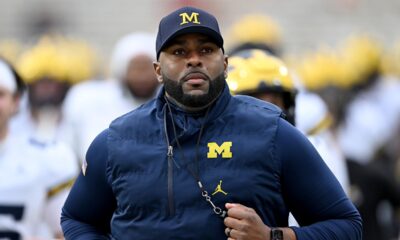
 Sports1 week ago
Sports1 week agoPolice detain Michigan head football coach Sherrone Moore after firing, salacious details emerge: report
-

 Fashion1 week ago
Fashion1 week agoTommy Hilfiger appoints Sergio Pérez as global menswear ambassador
-

 Business1 week ago
Business1 week agoCoca-Cola taps COO Henrique Braun to replace James Quincey as CEO in 2026
-

 Fashion1 week ago
Fashion1 week agoBrunello Cucinelli lifts 2025 revenue growth forecast to up to 12%
-
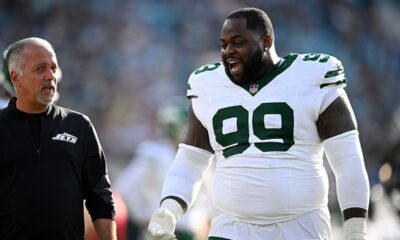
 Sports4 days ago
Sports4 days agoJets defensive lineman rips NFL officials after ejection vs Jaguars






